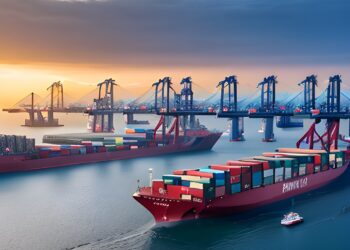From the British Raj to Amrit Kal, India has made a substantial journey of its own. With a booming population of 140 crore, the government is working in mission mode to create an ecosystem wherein everyone is benefitted from its policies. The strategies and policies are focussed on the welfare of poor and marginalized section of society who have been deprived of the necessities.
As we analyze the food security needs of the underprivileged, we find that poor households usually find it difficult to procure meals for themselves and their family. Since most of them are daily wagers and are employed on a day-to-day basis, they arrange food for their family from the daily income that they earn. When the COVID-19 pandemic hit the world, it brought with itself a big crisis for India’s daily-wage workers in both the organized and unorganised segments. They struggled to find work in the local labour market and no work in a day means no money to buy food and essentials for their families. The COVID-19 crisis traumatised poor people (urban & rural) the most and there was an urgent need to draft a system that can ensure provision of food to the needy.
Food supply for the needy in covid times was a global problem that almost every country witnessed. Even though many countries had a surplus of food grains in their warehouses or granaries, there was a need for a robust Public Distribution System (PDS) that was essential to ensure Food Distribution to the needy population. The Indian government had been the frontrunner across the world to solve this problem of food security by launching the Pradhan Mantri Garib Kalyan Anna Yojana (PMGKAY) in April 2020 within a week of imposing the lockdown in the country. The scheme aimed at providing food to the poorest of the poor so they could meet their essential needs. The beneficiaries of this scheme were around 80 crore poor people who did not only get 5 kg of wheat or rice but also 1 kg of preferred pulses for free every month so that they would not struggle in meeting their food necessities.
The quick turnaround time of getting the scheme ready, building the required infrastructure for distribution and implementing it successfully clearly demonstrates India’s rise in transforming itself from a policy maker to long term visionary. Today’s India demonstrates its capability to think out of the box and create sustainable strategic solutions to unforeseen problems that might hit the country during crisis times. The government has showcased that the old India which used to take multiples years just in drafting a policy or scheme and another couple of years for implementation is history now. The new India can ensure food security for its population, especially to the needy and poor and is committed to the welfare of its people.
Since the introduction of the scheme in 2020, there have been many additions to it to ensure that it reaches the right set of people. The scheme has been extended for another year till 2024 in the financial budget of 2023 and it is likely to be continued in future. The government is bearing the expenditure of around 2 lac crore to ensure that India reaches a level where none of our poor population sleeps on an empty stomach. This is the decade of a new India which has made the yatra from Sankalp to Siddhi and is striving to be the next Vishwa guru of world.
References








